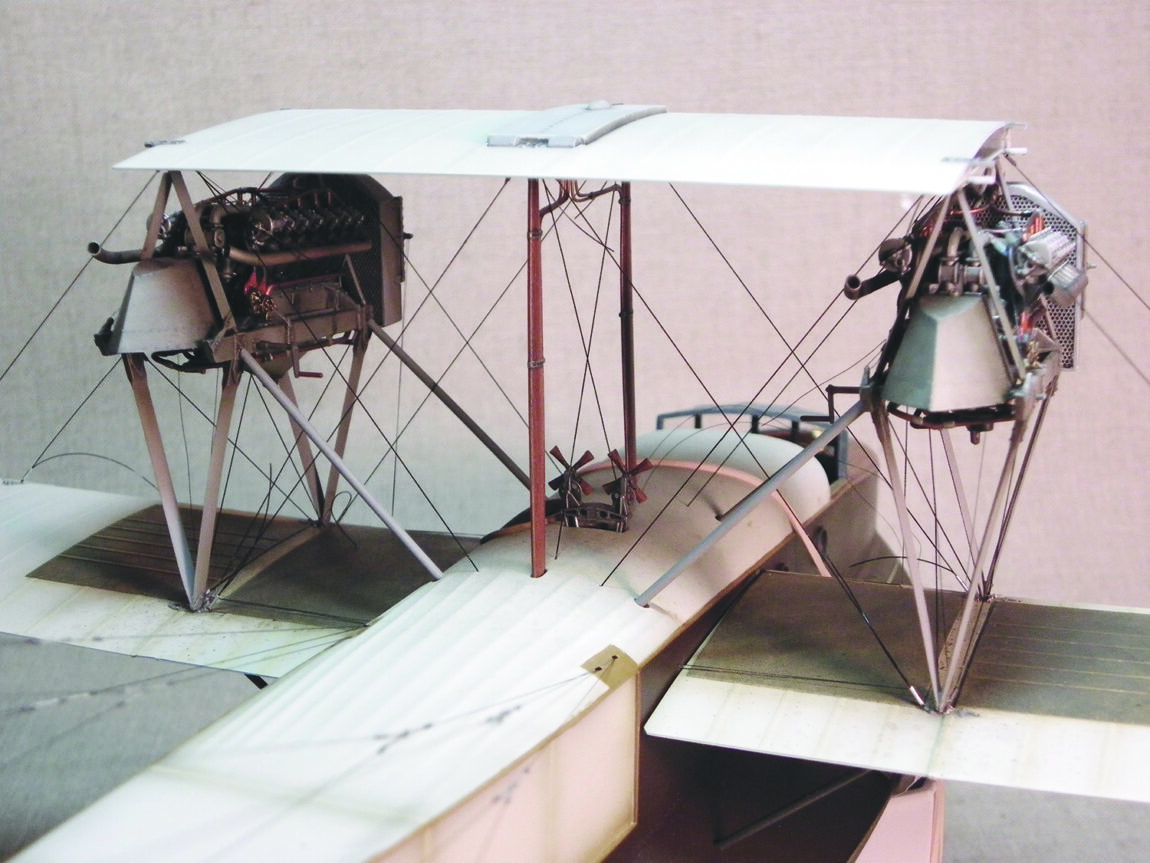March 20, 2023
Pictured above: Stan Michalak with the 1:32 scale model he built of a Curtiss H-16 flying boat
The Royal Aviation Museum is set to present its first-ever aviation conference on April 14 and 15, 2023.
Spearheaded by a small group of passionate, amateur aviation researchers, the conference will take an in-depth look at early 20th-century aviation development in Canada. Punctuating the conference will be the unveiling of the museum’s newest artefact—representing some of the earliest days in Manitoba’s aviation history—a hand-built, one-of-a-kind model of the Curtiss H-16 flying boat.
In 2020, Winnipegger Stan Michalak set out to commemorate Manitoba’s 150th birthday in a unique way. He decided to build a scale model of the Curtiss H-16 flown in Manitoba in the 1920s—the only one ever registered to fly in Canada.
Now, that model is finally complete and Stan has donated it to our museum. It will be on display beginning April 14, 2023.
The history of the Curtiss H-16

The Curtiss H-16, the US-built version of the Felixstowe F.2a, was stationed at the Canadian Air Board’s flying boat base in Victoria Beach, MB, (at the south end of Lake Winnipeg) in 1923. A precursor to the Royal Canadian Air Force, the Air Board was a pseudo-military organization established by the government to bridge the gap between the flying units that served in Europe during the Great War and what was to become this country’s air force in 1924.
The H-16 was part of a shipment, dubbed the Imperial Gift, of more than 100 aircraft that Canada received from Great Britain after World War I. Along with Canada, Australia, New Zealand, South Africa, and India also received surplus aircraft. These planes were meant to help the commonwealth countries establish air forces and stimulate the growth of aviation.
Prior to the H-16 entering service, the flying boat base used a small fleet of Felixstowe F.3s. These aircraft made the first flights into northern Manitoba, northwestern Ontario, and northeastern Saskatchewan. The F.3 was also the aircraft that Basil Hobbs and Robert Leckie flew from Rivière du Loup, Quebec to Winnipeg during the first trans-Canada flight in 1920.
When the air harbour’s F.3s had to be pulled out of service due to wear and tear, it was the Curtiss HS-2L that took their place. Unfortunately, a violent storm in the spring of 1923 destroyed one of the HS-2Ls. A call to Ottawa resulted in the discovery of two additional aircraft received as part of the Imperial Gift—one H-16 that was beyond repair, and another that was refurbished and sent to Victoria Beach. Her call letters were G-CYEP.


What became of G-CYEP?
G-CYEP was the only twin-engine aircraft in service that summer. One of her most memorable missions was the annual trip to deliver treaty annuity payments to Indigenous communities in the province. Pilot Basil Hobbs, commander of the Victoria Beach float base, faced many challenges during the 10-day trip. The journey was fraught with rough weather, poor fuel quality and navigation over unmapped territory.
Shortly thereafter, another storm hit Lake Winnipeg. G-CYEP came loose from her mooring and was pummeled by waves that caused her to crash against the rocky shore until she was unsalvageable. The remaining parts were destroyed in a bonfire.
Michalak says, “As a lifelong builder of models of Canadian aircraft I was always attracted to unique subjects. I draw immense satisfaction from doing the research and custom-building specific Canadian examples not just because of the result, but because of the stories that go with each model. While what we know of GCYEP is limited, I am intrigued by the possibility that there are stories of her that have yet to be uncovered. Looking at her in model form helps me imagine what those stories might be.”
Stan’s model of the Curtiss H-16 will be on display at the Royal Aviation Museum beginning in 2023.



